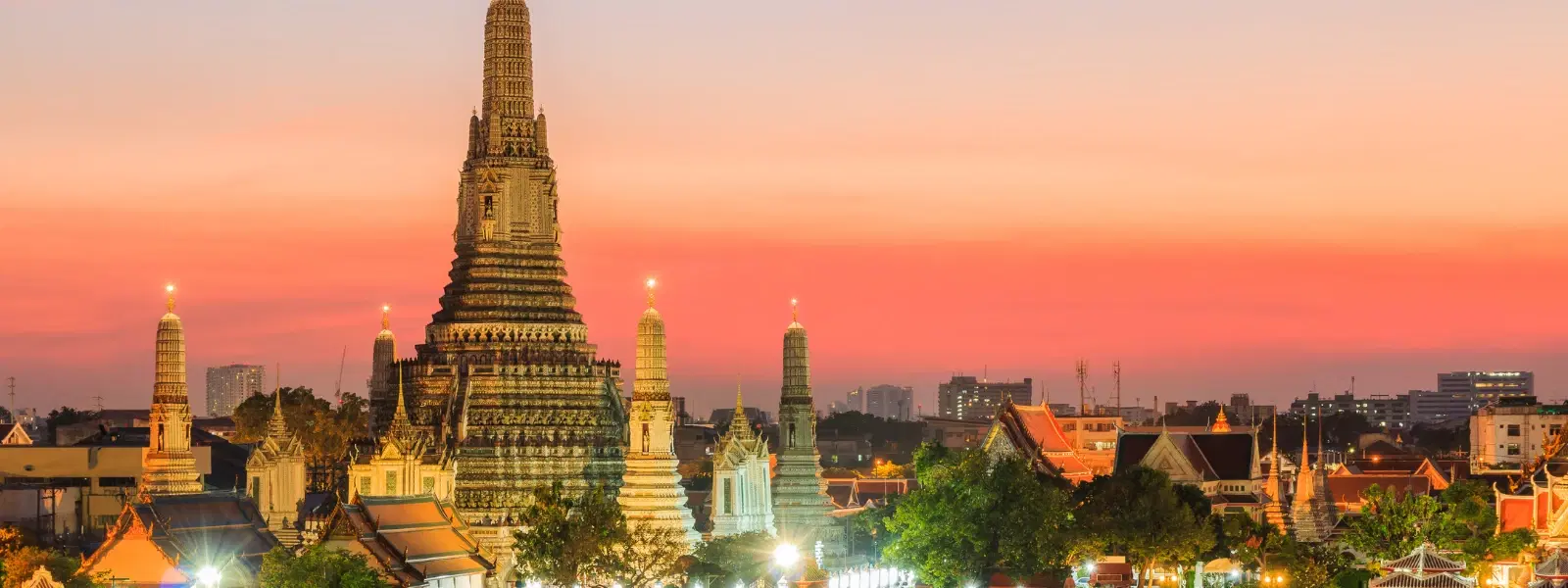
Hotels
•05 min read

Thailand has long been a dream destination for many travelers. Its diverse landscapes, rich culture, and famous beaches make it a year-round wonder. However, not all months offer the same experience. With varying weather patterns across different regions, choosing the right time to visit can mean the difference between a relaxed holiday and a challenging trip. In this post, we explore which is the best time to visit Thailand based on weather conditions, tourist activities, and practical travel tips. Whether you’re planning to roam the bustling streets of Bangkok, explore the historical corridors of Chiang Mai, or relax along the pristine beaches of Phuket, our guide is designed to help you pinpoint the ideal time for your vacation.
Thailand enjoys a tropical climate dominated by three main seasons: hot, rainy, and cool. Each season offers its own charm. The cool season, generally extending from November to February, is characterized by pleasant temperatures and gentle breezes, making outdoor exploration and beach visits more enjoyable. In contrast, the hot season from March to May sees soaring temperatures ideal for tropical fruit feasts and water activities. The rainy season, which peaks between June and October, brings lush landscapes and fewer crowds, though heavy showers can disrupt travel plans.
Monsoon patterns can significantly impact travel, particularly for those planning outdoor adventures like island-hopping or exploring off-the-beaten-path sites. Tourists often schedule their trips during the cool and dry periods to avoid unexpected rain showers and high humidity. When planning your travel dates, consider your desired activities. For instance, beach locals in Phuket and Krabi flourish during the dry periods, while the cultural heritage of cities like Chiang Mai is perfect for indoor and outdoor festivals during milder months.
January stands out as one of the most loved months in Thailand. Expect cool, comfortable weather that is ideal for exploring the cityscapes of Bangkok, the cultural wealth of Chiang Mai, and the secluded beaches of Koh Samui. Temperatures are moderate, allowing travelers to roam freely without the discomfort of intense heat. This season provides a perfect canvas for activities like trekking, temple visits, and city tours.
With its dry, sunny skies, February is a haven for beach enthusiasts. Destinations such as Phuket and Krabi shine during this month, offering calm seas and pristine sandy shores. Beyond the beaches, cultural attractions add another layer to your trip; for example, the Chiang Mai Flower Festival fills the city with vibrant colors and scents, enhancing its natural beauty. This month crafts a dual experience of relaxation and cultural immersion.
Landing at the onset of the peak travel season, November is celebrated for its mild weather and festive spirit. Travelers are drawn to Thailand during this time not only for its cooler conditions but also for its traditional celebrations. The famous Loi Krathong Festival, where floating lanterns light up the waterways, is a highlight that captures the heart of cultural enthusiasts. The comfortable temperatures make it perfect for exploring bustling markets and historic landmarks in cities like Bangkok and Chiang Mai.

December is synonymous with holiday cheer in Thailand. The cool weather, combined with a festive atmosphere, makes it one of the most sought-after periods for travel. Visitors can enjoy the blend of tradition and modernity in Bangkok’s vibrant markets while retreating to the serene beaches of Phuket for a quiet escape. Whether you’re indulging in local cuisines, exploring ancient ruins, or simply soaking in the festive ambience, December offers an experience tailored for the holiday spirit.
March ushers in warm weather that brings a bounty of tropical fruits, a delight for food lovers. This month provides a unique blend of natural abundance and cultural readiness, as travelers partake in the prelude to Songkran, the much-anticipated Thai New Year, which officially begins in April. With early summer warmth and clear skies, March is not only a treat for your taste buds but also sets the stage for celebrations that fill the streets with vibrant energy.
Although July falls in the midst of the rainy season, it offers a hidden charm for travelers seeking solitude and budget-friendly stays. With fewer tourists, accommodations often come at lower prices. The Gulf of Thailand islands, particularly Koh Samui, experience relatively less rainfall during this period, allowing for a mix of adventure and relaxation. This month is perfect for those interested in exploring lesser-known attractions without the hustle of peak-season crowds.
October witnesses the gradual end of the rainy season, providing a calm transition into the busiest travel period. The mild weather conditions invite visitors to explore the dynamic energy of Bangkok or enjoy early-season island-hopping adventures. With nature freshly renewed, landscapes are vibrant and inviting. Travelers can snag early-season deals on hotels and attractions while enjoying the serene post-monsoon environment.
When preparing for your Thai adventure, packing appropriately can greatly enhance your experience. For the hot season, lightweight clothing, hats, and sunscreen are must-haves. If traveling during the rainy season, be sure to include a sturdy umbrella or raincoat, waterproof bags, and quick-dry clothing. Cooler months call for a mix of warm layers and comfortable shoes, as evenings can sometimes be chilled. Regardless of the season, always pack a pair of comfortable walking shoes and insect repellent to ensure readiness for any situation.
For those planning to travel during peak seasons, early booking is crucial as hotel rates can soar with high demand. Conversely, shoulder seasons and off-peak periods offer amazing deals and a chance to explore popular tourist destinations without the rush. Consider traveling during the early morning or late evening hours when attractions are less crowded. Efficient planning and a bit of flexibility in travel dates can help secure the best hotels and overall travel deals.
Attending local festivals can truly enrich your travel experience. Plan your itinerary around events such as Songkran, Loi Krathong, and even the unique Phuket Vegetarian Festival. These seasonal events offer an immersive glimpse into Thai culture and allow you to experience traditional festivities up close. Engage with locals, try regional delicacies, and take part in traditional ceremonies to create unforgettable memories.

Pro Tip from Tata Neu:
Did you know? November is one of the best months for Thailand vacations, combining mild weather with iconic festivals like Loi Krathong. Book your hotels early to secure the best deals during this popular season.
January, February, and November are the top choices for touring Thailand given the favorable weather and exciting cultural events during these months.
The rainy season, typically from May to October, offers the best deals on flights and accommodations, though some regions like Koh Samui may remain drier.
Travelers from the USA often prefer November through February when the weather is mild, providing a welcome escape from the winter chill back home.
April is usually the hottest month, with temperatures sometimes soaring above 35°C, making it a challenging time for outdoor activities.
The peak rainy months, particularly September and October, can pose challenges due to heavy showers and possible flooding in some areas.
Thailand is a land of endless diversity and experiences. Whether you are drawn to the festive spirit of November, the cool tranquility of January and December, or the unique advantages of off-peak travel in July, there is a perfect month tailored to every traveler’s interest. By understanding the local climate and planning strategically, you can enjoy a trip that perfectly balances relaxation and adventure. From the vibrant cities to serene island escapes, each season in Thailand offers its own magic and wonder, culminating in a travel experience that is both memorable and fulfilling.